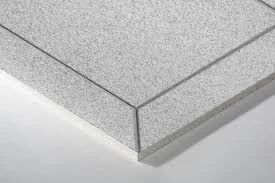Nov . 24, 2024 15:11 Back to list
how to install access panel in ceiling
How to Install an Access Panel in a Ceiling
Installing an access panel in a ceiling can be a practical solution for gaining easy entry to hidden utilities, such as electrical wiring, plumbing, and HVAC systems. Proper installation ensures that these access points are unobtrusive and maintain the aesthetic quality of your ceiling. This article will guide you through the steps for installing an access panel in a ceiling, including the necessary materials, tools, and techniques.
Materials Needed
Before you begin, gather the following materials
1. Access Panel Purchase an access panel that is appropriate for your ceiling type (drywall, plaster, etc.) and size requirements. 2. Measuring Tape A tape measure will help you determine the correct placement and size for the opening. 3. Drywall Saw or Utility Knife For cutting the ceiling material. 4. Stud Finder To locate any joists or studs in the ceiling. 5. Level To ensure your panel is installed straight. 6. Pencil To mark your measurements. 7. Safety Goggles and Dust Mask Safety gear to protect yourself during the installation process.
Steps to Install an Access Panel
Step 1 Determine Location
Choose a suitable location for the access panel. Consider utility access needs as well as the appearance of the ceiling. Use a stud finder to check for joists or other obstacles in your chosen area to ensure that your access panel won’t interfere with these elements.
Step 2 Measure and Mark
Once you have selected an appropriate location, measure the size of the access panel. Using a pencil, outline the dimensions on the ceiling, ensuring the outline is straight and level. Use the level tool to verify that your markings are even.
Step 3 Cut the Opening
how to install access panel in ceiling

Using a drywall saw or a utility knife, carefully cut along the marked lines to create an opening in the ceiling. Make sure to cut slowly to control the blade and reduce the risk of damaging surrounding areas. If you encounter any resistance, check for nails or screws that may be holding the drywall in place.
Step 4 Prepare the Access Panel
Before installation, double-check that the access panel fits within the opening you’ve created. Most access panels come with a frame that will help secure them in place. If necessary, adjust the opening size slightly to accommodate the panel.
Step 5 Secure the Panel
Position the access panel in the opening, ensuring it is flush with the ceiling surface. Using the provided screws or adhesive, secure the access panel to the ceiling. If there is a frame or mounting strip, ensure it is firmly attached to support the panel.
Step 6 Finish the Installation
Once the access panel is secured, clean up any excess debris from cutting. If the panel has a trim or cover, install it according to the manufacturer’s instructions. Ensure the panel opens and closes easily, allowing for efficient access to the hidden utilities.
Additional Tips
- Paint or Finish If the access panel disrupts the ceiling's appearance, consider painting it to match the ceiling color. This will make it less noticeable. - Testing After installation, test the access panel by opening and closing it a few times to ensure it operates correctly and securely. - Regular Maintenance Periodically check the access panel to ensure it remains secure and functional, especially if it is in a location that is frequently accessed.
Conclusion
Installing an access panel in a ceiling can be a DIY task that enhances both functionality and convenience in your space. By following these steps and taking the necessary precautions, you can successfully create an access point that blends seamlessly into your ceiling while providing easy access to vital utilities. Whether you're a seasoned DIY enthusiast or a beginner, this project is manageable and rewarding—it will simplify future maintenance tasks and renovations.
-
Quality Ceiling Trap Doors & Access Panels | Easy & Secure AccessNewsAug.30,2025
-
Durable Ceiling T Grid Systems | Easy InstallationNewsAug.29,2025
-
PVC Gypsum Ceiling: Durable, Laminated Tiles for Modern SpacesNewsAug.28,2025
-
Pvc Gypsum Ceiling Is DurableNewsAug.21,2025
-
Mineral Fiber Board Is DurableNewsAug.21,2025
-
Ceiling Tile Clip Reusable DesignNewsAug.21,2025







